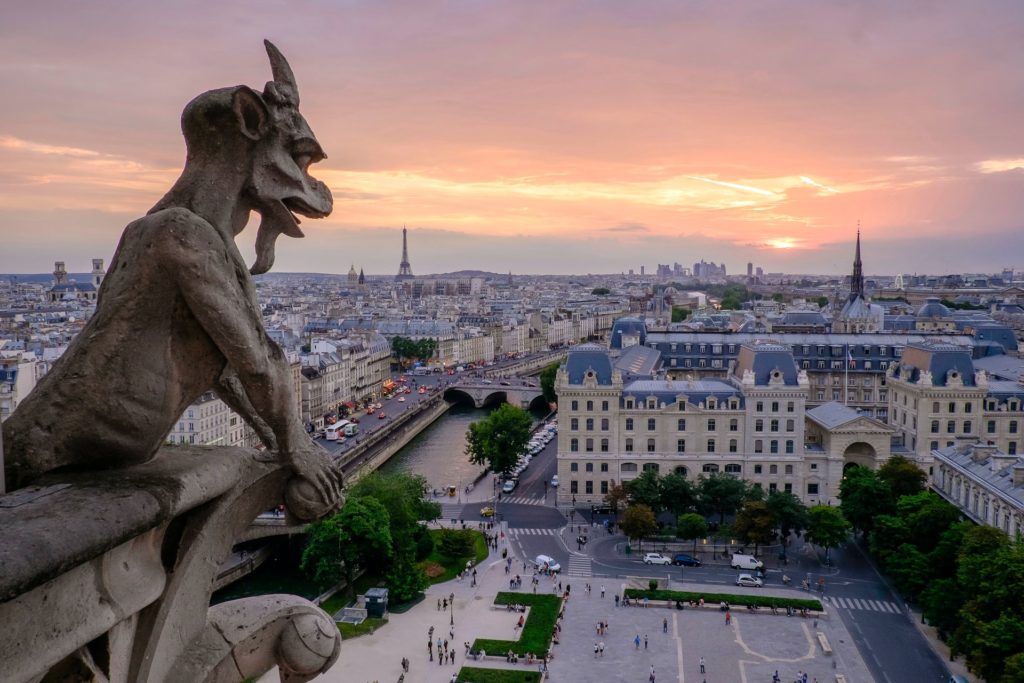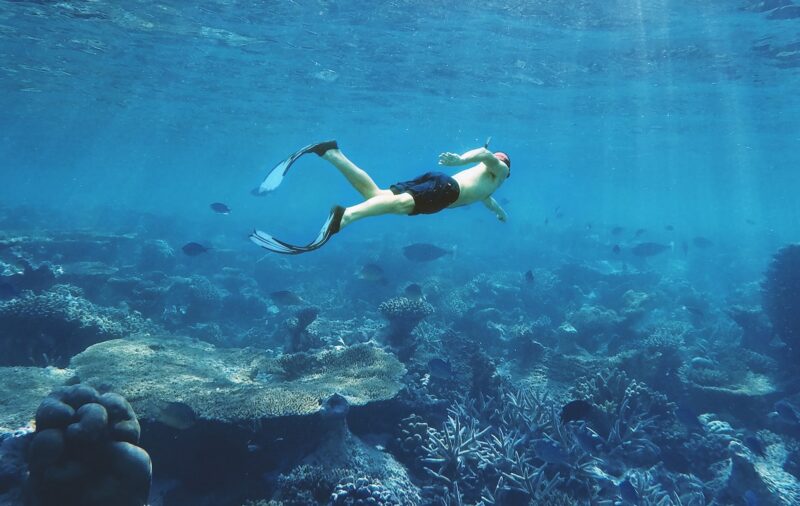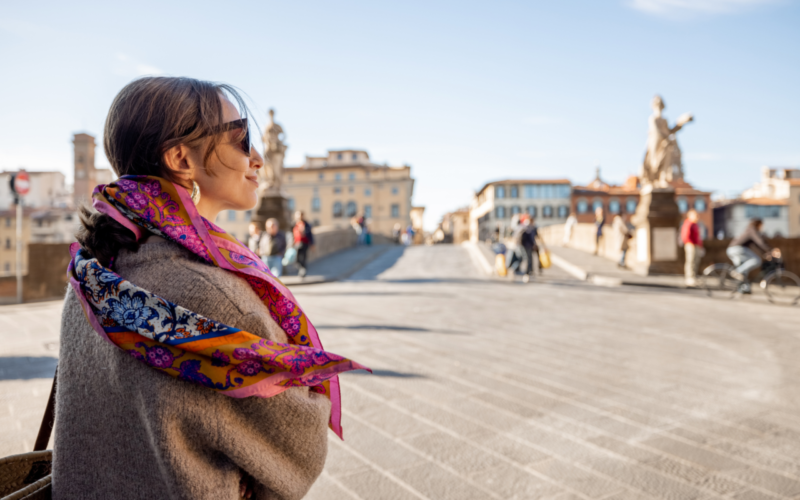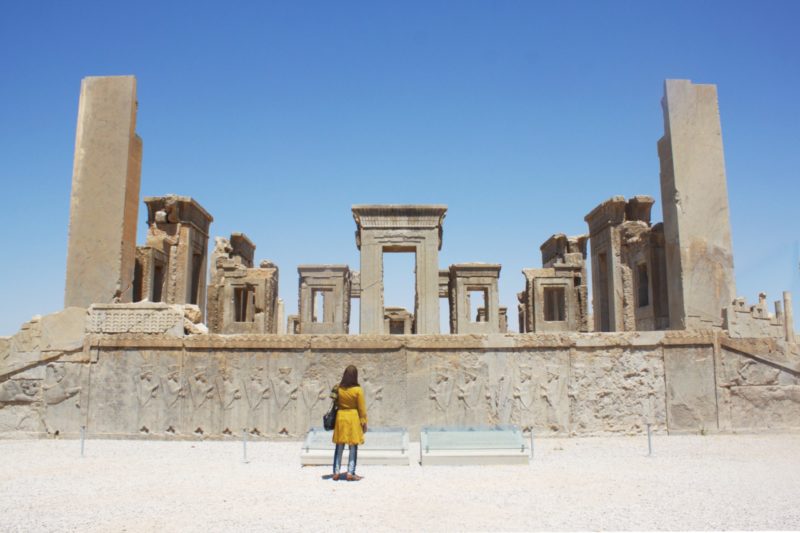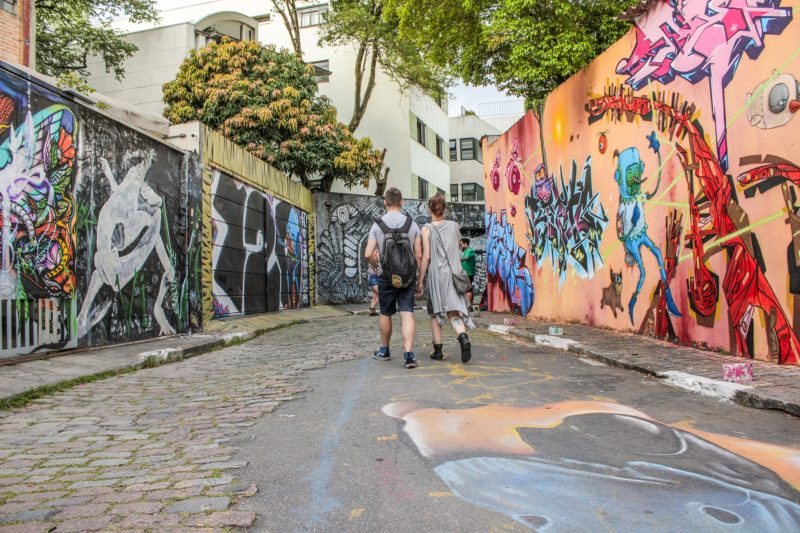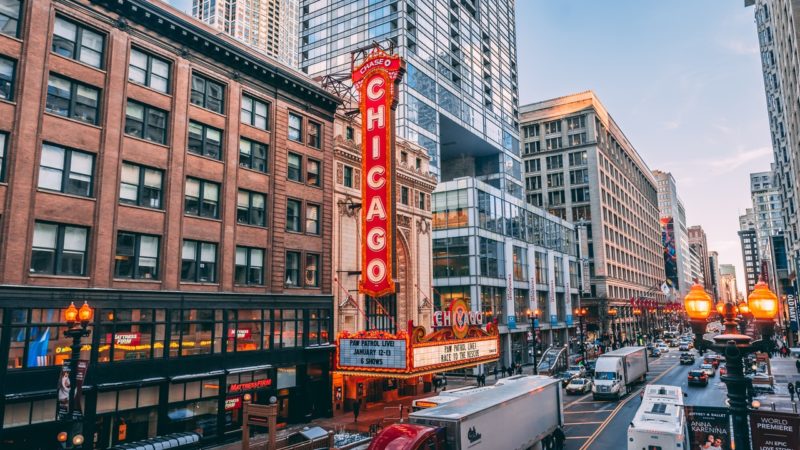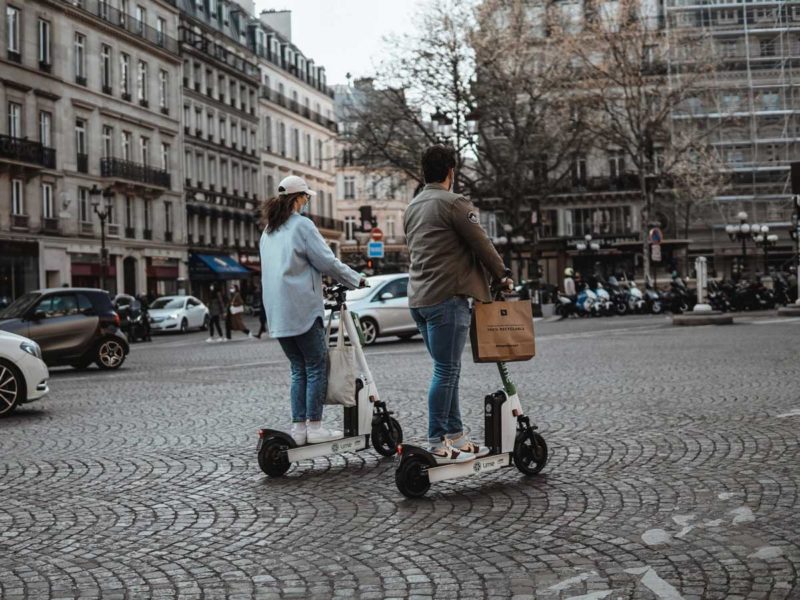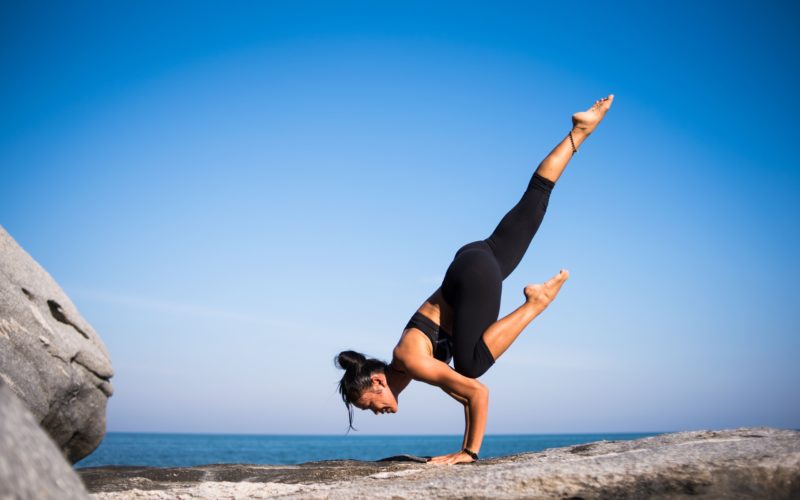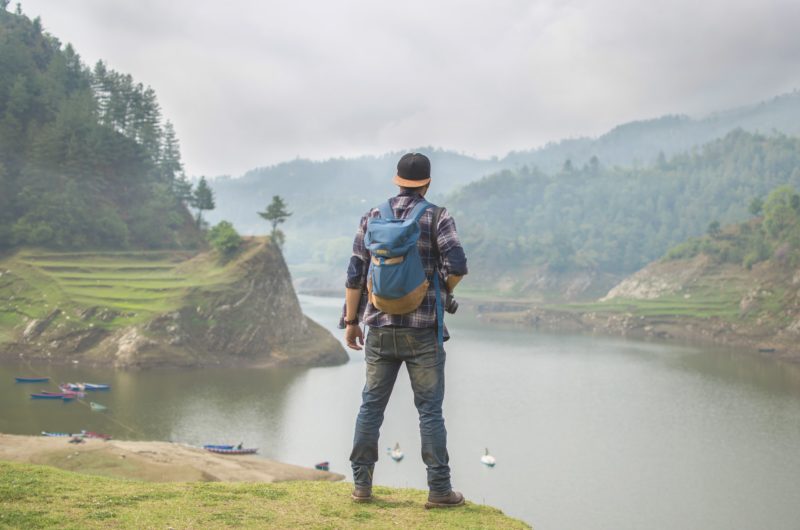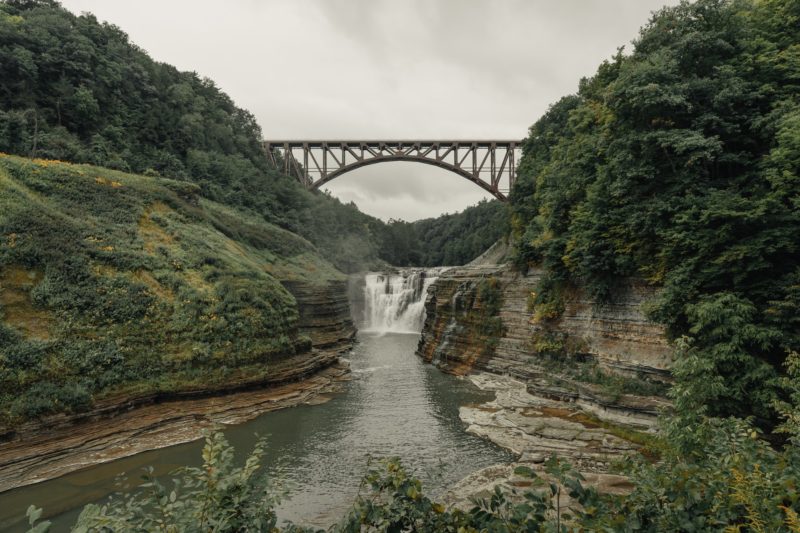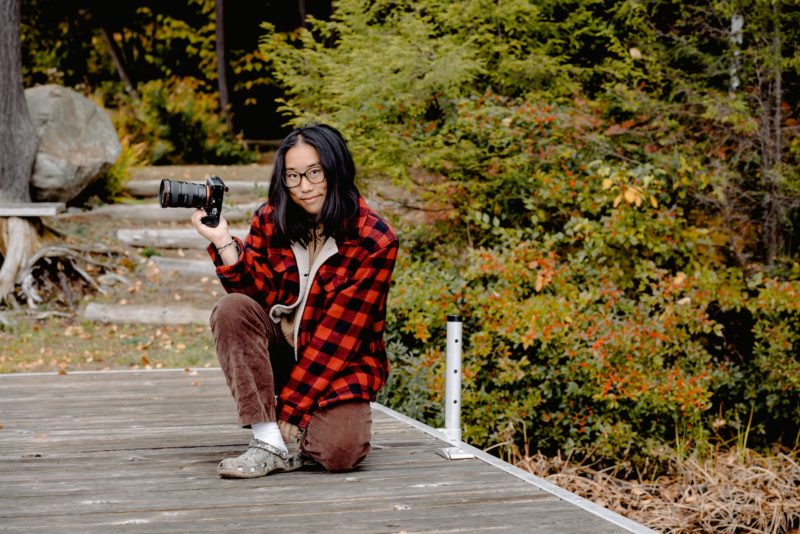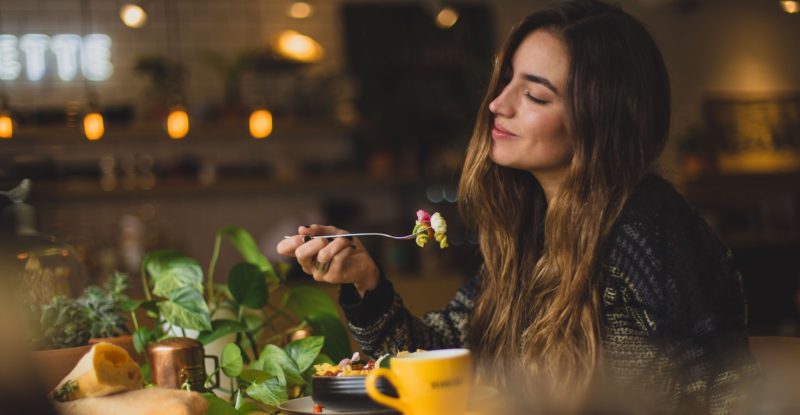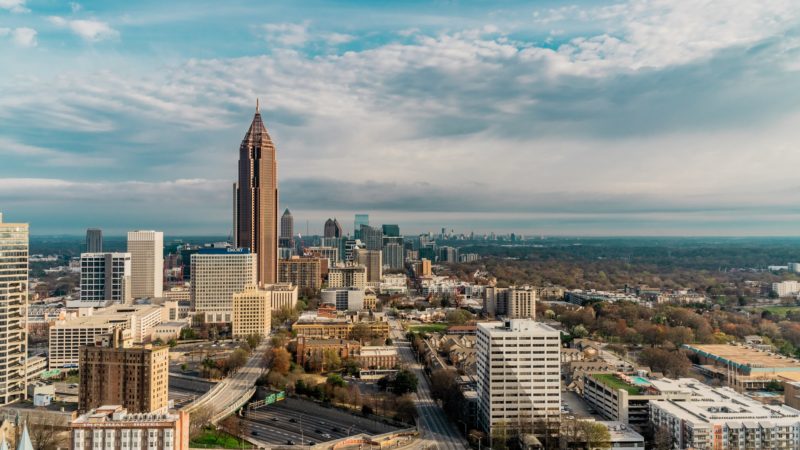If you’re planning a trip to Paris, knowing where to start is your first adventure. There are so many things to do in Paris, an historic city renowned for its beautiful architecture, world-class museums, and delicious cuisine. This guide highlights the 11 best things to do in Paris – seasoned with a sustainable travel twist!
Paris has served as a muse to writers, artists, musicians, and romantics for hundreds of years. Paris is one of the most popular tourist destinations in the world, with millions of visitors each year. You want to do all the best things there are to do in Paris while at the same time helping to preserve the cultural and environmental health of the city.
To truly have an authentic experience, add some of these lesser-known gems off the beaten path in Paris, with some of the more famous fare. Bon voyage!
11 Best Things To Do in Paris
Experience the Eiffel Tower
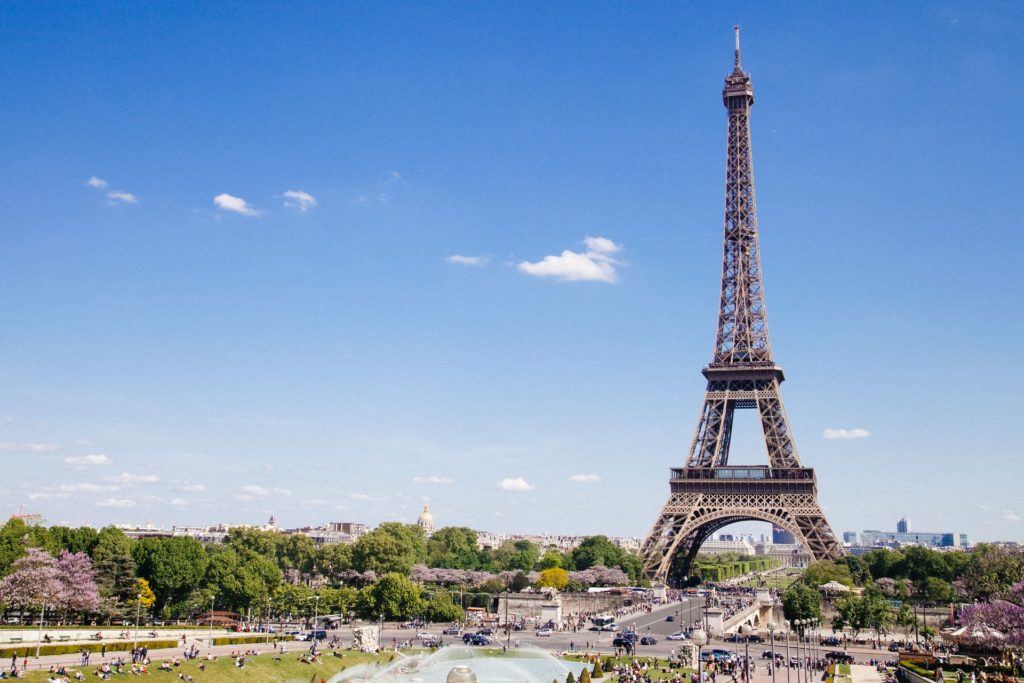
Ahh, the Eiffel Tower. One of the most recognizable landmarks in the world. It’s touristy, it’s iconic, it’s an architectural marvel, and it’s one of the quintessential things to do in Paris. But the esplanade directly underneath the tower can get packed with visitors wielding selfie sticks and people selling replica keychains. Instead, pick up a wheel of camembert cheese and a freshly baked baguette from the markets on Rue Cler and head to Champ de Mars, the park in front of the Eiffel Tower, for one of the most picturesque picnics of your life.
Thinking about going to the top? With restaurants, shops, and informational exhibits at each of the Tower’s three levels, a trip to the top of the Eiffel Tower might be the experience you’ve been waiting for your whole life. Buy timed tickets ahead of time to avoid standing in a very long line, and choose your ticket wisely – one ticket provides access to the Tower’s first two levels, another will get you all the way to the top. Keep in mind that the summit sits at 906 feet above the ground, which is a LOT higher than you might realize. Add in a Champagne Bar, a narrow open-air viewing platform, and a surprising amount of marriage proposals, and the top of the Eiffel Tower can quickly get overwhelming. Those with vertigo or claustrophobia might want to stick to the first two levels.
Eat a Vegan Meal in Paris
The phrase “classic French cuisine” might bring to mind heavy cream sauces and beef bourguignon, but thanks to an emerging sustainable food culture, it’s never been easier to enjoy a vegan or vegetarian meal in Paris. Start your day with vegan donuts at Boneshaker, a vegan muffin from Cloud Cakes, or the carrot lox platter at MESA. For lunch, try a Portobello mushroom burger from Abattoir Végétal or BrEATHe’s beetroot polenta, or treat yourself to a midday ‘frawmage’ plate of vegan cheeses at 42 Degrés. Dinner options include spinach walnut lasagna from Le Portage du Marais, pad see ew at Tien Hiang, Paris’ first vegetarian Asian restaurant, or a once-in-a-lifetime vegetable tasting menu experience at Arpège. And for a sweet treat, head over to VG Pâtisserie where you’ll find gourmet vegan pastries like Bourdaloue tart, Black Forest cake, and mango tatin.
Visit the Louvre Museum
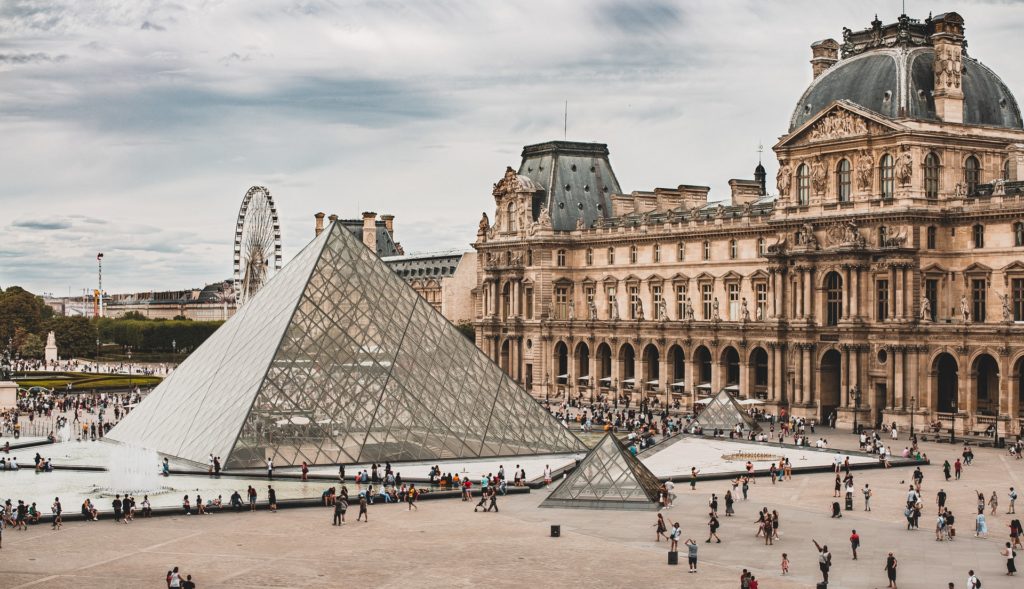
As the home of da Vinci’s Mona Lisa, the Louvre Museum is the world’s most visited art museum. It’s also one of the biggest and best museums in Paris, with over 35,000 paintings, sculptures, and other works of art on display at any time. Throughout the 16th century, French monarchs used the Louvre as a royal palace and routinely added wings to the building to suit their growing councils. As a result, the present-day museum is a jumble of sprawling hallways and galleries, and you can easily spend your entire visit staring at the museum map. A guided tour is the best way to see the Louvre Museum. Whether you’re an art newbie and need a “best of the Louvre” highlight tour or have a specific list of artists and artwork you want to see, this Louvre Crash Course guided tour will provide essential skip-the-line tickets and teach you everything you’ve ever wanted to know about the museum’s art and architecture.
Explore Paris by Bike
One of the most sustainable ways to cover a lot of ground and maximize your sightseeing experience is to explore Paris on a bike. Luckily, this city is one of the best cities in Europe for bike riding! Forbes recently reported that Paris is to become a 100% cycling city in the next four years, with cycling routes in Paris to become fully protected.
Renting a bike for a few hours or a day is easy and affordable thanks to Vélib, Paris’ bikeshare program. Bicycles and electric bikes are stored at over a thousand docking stations across the city, providing a convenient and memorable way to hop from one romantic Paris attraction to another charming tucked away cafe. Love to ride but nervous about navigating? Try a guided bike tour! Spend your afternoon cycling across the city under the guidance of a licensed historian on this private bike tour of Paris. Your guide will provide the bike, the helmet, and the chance to experience some of the best things to do in Paris like a local – all you have to do is enjoy the ride!
Shop for Vintage Clothing in Paris
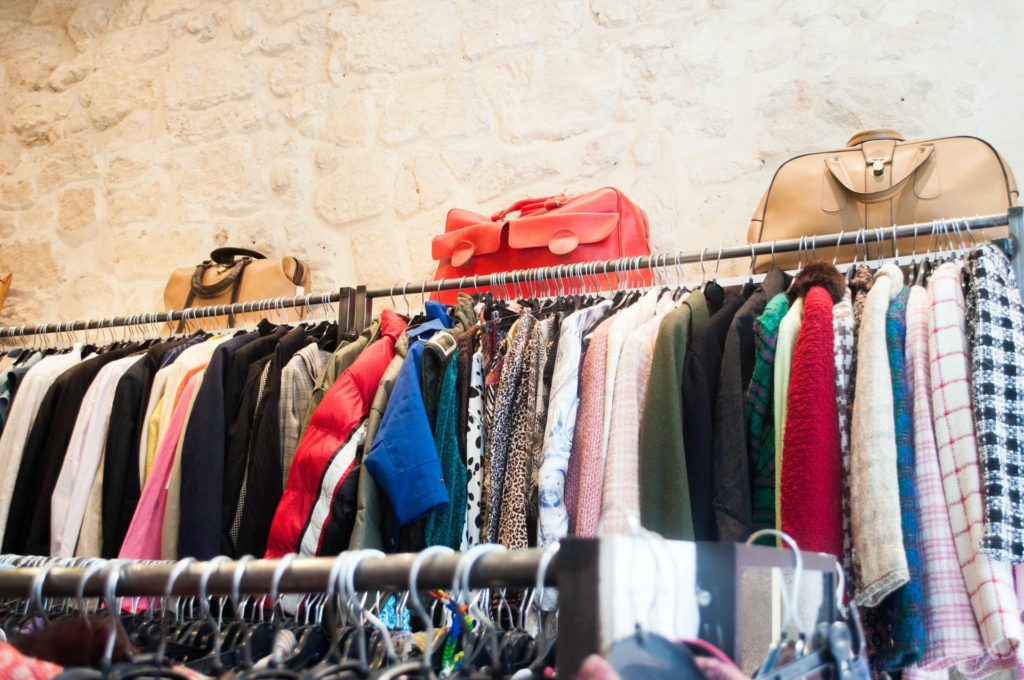
Shopping for second-hand clothing is one of the most sustainable ways to update your closet, and what better city in the world to have fun with this! How about trying your thriftstore luck on your Paris vacation? Rifle through the racks of the vintage stores in the trendy Marais neighborhood and you just might find your next favorite piece. Reach for Yves St. Laurent at Sapeur Vintage, pick up the perfect pair of pants at Tilt Vintage, drape yourself in Dior at Eline Vintage, and search for Celine bags at Odetta Vintage. You never know what hidden fashion gems you might discover!
Pro tip: It’s customary to greet salespeople with “Bonjour, monsieur/madame!” when you walk into a store or restaurant, even if those are the only French words you can remember. Your kindness and attention will be quickly returned!
Learn the History of Paris Fashion
Ever since King Louis XIV established a strict dress code for the members of his court, Parisian designers have influenced how people all over the world think about clothing. From haute couture to the concept of clothing “seasons,” fashion is one of France’s most influential and enduring exports. On this Context tour, you will experience 300 years of Paris history through the eyes of its most famous designers. Stroll through the covered passageways that were home to the city’s first shopping arcade, peek into the former ateliers of 19th century designers like Charles Frederick Worth and Jaques Doucet, and follow the lines of fashion lineage from Chanel to Dior and beyond.
Relax in a Paris Garden
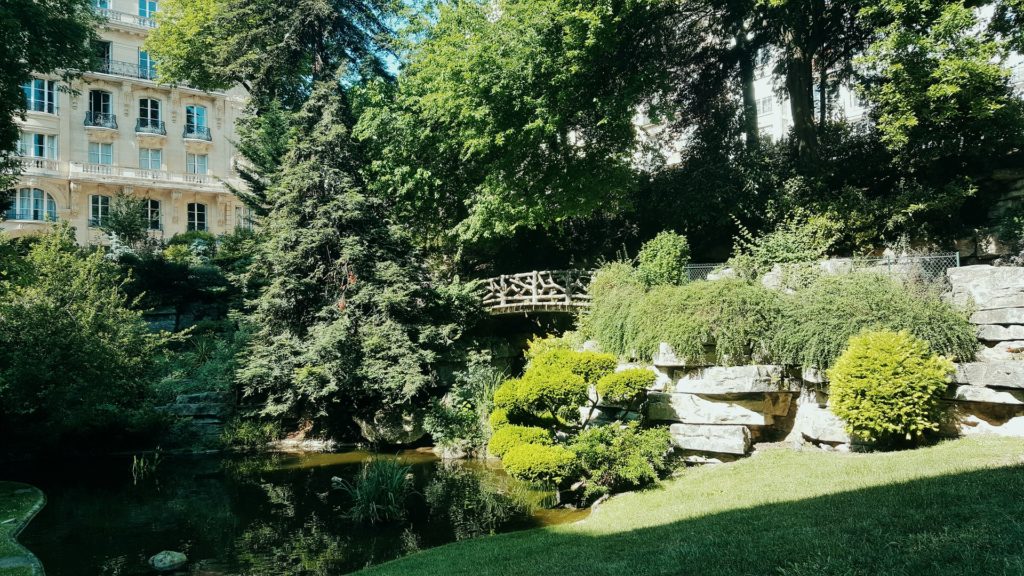
With over 400 parks and greenspaces dotted throughout the city, it’s more than likely you’ll find yourself in at least one or two on your Paris vacation. But rather than rush through on your way to your next museum, make the garden the destination. Explore a pristine example of “French-style garden” at the Jardin des Tuileries and contrast that with the rambling “English-style garden” Parc Monceau. Or, opt for something completely different at Coulée verte René-Dumont, an elevated walkway that travels nearly 3 miles along an old and unused railroad track. Finally, make a point to stop at the stunning Jardin du Luxembourg, one of the best things to do in Paris! It has over 61 acres of manicured gardens, an apple orchard, a puppet theater, and a palace that once served as a royal residence.
Discover Unique Museums in Paris
Visiting a museum is one of the must-do activities on your Paris vacation. But with hundreds of options spread across the entire city, it can be hard to determine which is the best museum in Paris for you. There are the heavy-hitters like the Louvre, Musee d’Orsay, and the Centre Pompidou, but they are huge and often crowded. Instead, venture off the beaten path in Paris to visit one of Paris’ lesser-known museums! These underappreciated collections are often much smaller in size and focus on one particular theme, which can directly translate to a unique and crowd-free museum experience.
Ignite your olfactory muscles and learn the secrets of the perfume industry at Musée de Parfum, or travel through time at Musée Histoire de Paris Carnavalet, the oldest museum in Paris. Discover the difference between a glass of bordeaux and a glass of burgundy at Musée du Vin, and try your sleight of hand at Musée de la Magie, one of the best magic museums in the world. Perhaps you’re an amateur philatelist (stamp collector)? You’re in luck, because the Musée de La Poste displays over 3,000 different postage stamps!
You might also want to consider doing a deep dive into the world of one particular artist. Paris has been a haven for writers, painters, performers, and other creative souls for hundreds of years, and many museums are dedicated to one particular artist’s collection and influence. Discover the works of acclaimed artists like Emile-Antoine Bourdelle, Ossip Zadkine, and Salvador Dali, and take a peek into the homes and studios of Gustave Moreau, Jean-Jacques Henner, and Le Corbusier. No matter who or what you’re into, Paris has a museum for you!
Find the Best Views in Paris
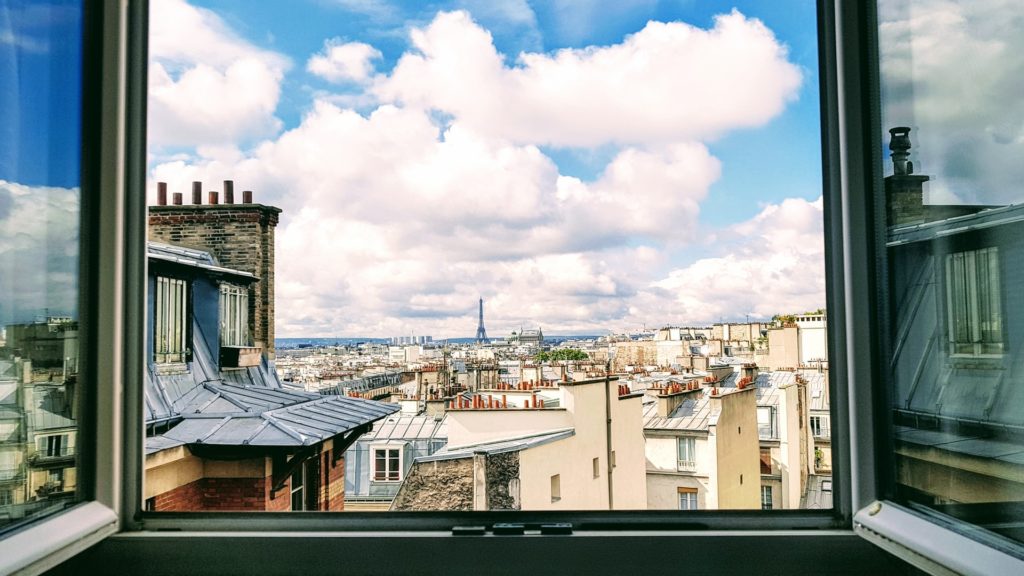
Finding that postcard-perfect view of the city is one of the most fun things to do in Paris, and there are a few spots you’ll want to put on your radar to ensure an epic panoramic picture. The most popular lookouts are from the Arc de Triomphe and the top of Montparnasse Tower, but for a real treat, head to the 8th floor terrace of the Galleries Lafayette, a luxury department store with prime views of the surrounding city. Another Paris must see is from the top of Sacré-Coeur, a gorgeous domed basilica perched at the top of the Montmartre neighborhood. There are 300 stairs to the viewing platform at the top, but the view is worth every step.
Take an Organic Food Tour of Paris
The charming yet eclectic Canal Saint-Martin neighborhood has recently emerged as one of the best places in Paris to eat. Located in northeastern Paris’ 10th arrondissement, the trendy area surrounds a waterway that feeds into the Seine River and is a popular hangout for foodies and artists. Some of the best cafes and restaurants in Paris are located here, many of which are leading the city’s organic food scene. On this food tour, you’ll get a sampling of the tastiest and healthiest treats available in the area, from pressed juices and natural wines to bioenergy cookies and gluten-free pastries. And don’t forget to bring along a reusable shopping bag in case you want to save some snacks for later!
Shop for Secondhand Books in Paris
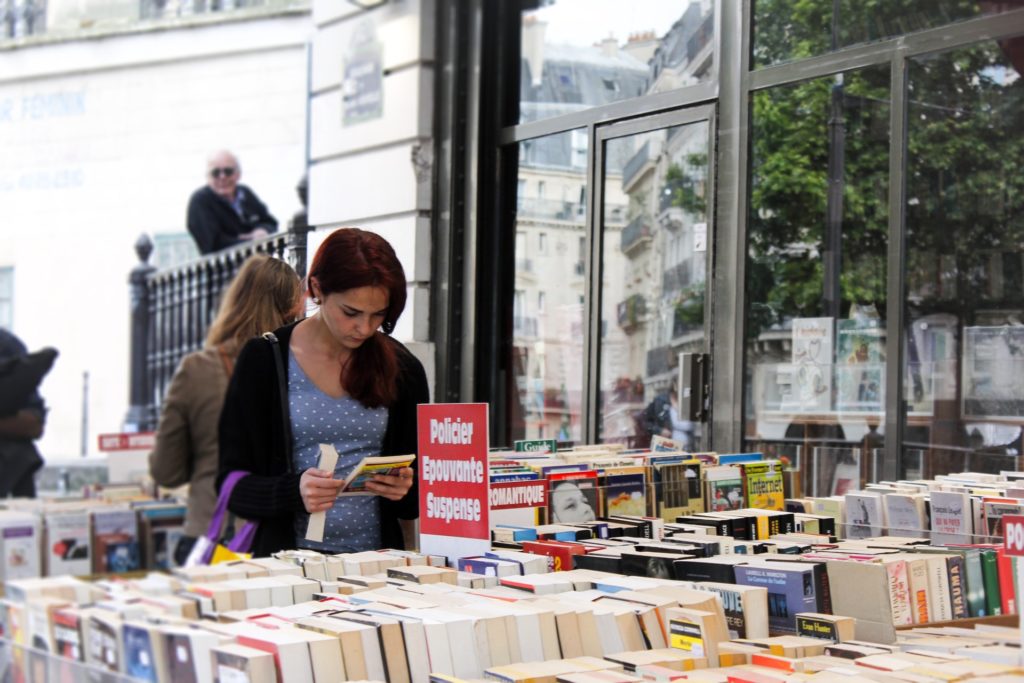
Calling all booklovers! Picking up a secondhand book is a wonderfully sustainable way to find your next great read. Used books also make for unique souvenirs, especially if you find ones with interesting cover art that would look great on your bookshelf back home. Depending on how old the book is, you might be taking home a bit of Paris history. Who knows who else may have enjoyed those pages! There are two places to begin your search for a great used bookstore in Paris. Individual book sellers, or “bouquinistes,” as they are known in Paris, have been lining the banks of the Seine River with their iconic green stalls for over 160 years. Along with antique books, you’ll also find maps, postage stamps, old magazines, posters, and other paper goods. The bouquinistes set up shop on both sides of the river, so stroll from Pont Marie to Quai du Louvre on the Right Bank and from Quai de la Tournelle to Quai Voltaire on the Left Bank to visit them all.
Though William Shakespeare himself was never known to have traveled here, one of the best things to do in Paris is to browse through the stacks in Shakespeare & Co. Founded in 1951, this English-language bookstore hosts events like readings and workshops and famously offers housing to aspiring writers in exchange for working in the store. The beds tucked into the bookshelves aren’t there for show – that’s where writers like Allen Ginsberg, Ray Bradbury, William Burroughs, and thousands more laid their heads over the years.
Things To Know About Visiting Paris
When to Go to Paris

There’s no wrong time to go to Paris. The timing of your trip to Paris will depend on what you want to do and see! Winter months from January-March can be a bit rainy but also blissfully uncrowded. June and July see long lines and high temperatures but extended opening hours on most Paris tourist attractions. Much of Paris goes “on holiday” during the month of August, which means you can find great deals on accommodation but museums and stores will have limited hours or be closed altogether. November through December can be chilly and grey but are excellent times to visit if you’re in search of Christmas markets and other holiday cheer. Your best bet is to travel to Paris during the spring and fall “shoulder seasons” of April/May and September/October – crowds will be thinner and the weather will be absolutely wonderful.
Where To Stay in Paris
Thanks to the Green Key award, it’s never been easier to make a sustainable choice when it comes to hotels in Paris. Look for hotels with the title of La Clef Verte (The Green Key), which is awarded to hotels who set high environmental standards in their approaches to water, energy, and waste. Two specific hotels worth a look are Hotel Gavarni, which regulates water flow throughout the building and encourages guest carpooling to and from major tourist attractions, and HOY Paris, a holistic hotel, meeting place, and yoga studio that recycles food waste, partners with small regional providers, and offers guests reusable water bottles to use during their time in Paris.
The Lay of the Land
Central Paris stretches north and south, divided neatly in half by the River Seine. Anything north of the Seine is considered to be on the right bank, or Rive Droite; places south of the Seine are on the left bank, or Rive Gauche. You’ll find popular Paris attractions and will likely spend your time on both sides of the river, but it’s fun to note that historically, the city’s elite ruling class lived on the Rive Droite while the Rive Gauche attracted students and artists.
Paris is also organized into a set of 20 neighborhoods called arrondissements. The first, or 1è, as it is abbreviated, is in the geographical center of the city; the rest spiral out in a clockwise direction, ending with 20è in the northeast corner of Paris. While the demarcation lines are purely for municipal purposes, each arrondissement boasts its own character and personality and it’s fun to discover the differences!
Getting Around Paris
The métro is Paris’ underground transportation system. While it may look daunting on the map, it’s a safe, easy, and sustainable way to travel around the city. Single-ride tickets are set at one price, meaning you’ll pay the same amount whether you’re going one stop or twelve. To avoid standing at a ticket kiosk every time you need a ride, purchase a carnet, or book of ten métro tickets. It’s the best value for your money, and you can split the book amongst your entire party.
Heading to other parts of France or elsewhere in Europe? Don’t forget to grab a Eurail pass! With options to travel to 33 countries over three months, a Eurail pass is one of the safest, easiest, and most sustainable ways to explore France, and beyond.
The Language
You may choose to learn French before you travel to Paris, or use some language tools while you’re there. English is incredibly widespread in Paris, especially around the main tourist attractions. But even if you can’t master the guttural sounds of a perfect French accent, any attempt at speaking the language will be noticed and appreciated throughout France. Practice speaking a few of these words and phrases and try to use them as much as possible on your Paris vacation.
- Oui [wee] = Yes
- Non [noh] = No
- S’il vous plaît [see voo play] = Please
- Merci [mehr-see] = Thank you
- Bonjour [bon-zhoor] = Hello/good day
- Au revoir [oh vwah] = Goodbye
- Pardon [par-dohn] = Excuse me
- Désole [day-soh-lay] = I’m sorry
- Combien? [cohn-bee-an] = How much?
- Parlez-vous Anglais? [par-lay-voo ahn-glay] = Do you speak English?
- Où sont les toilettes [oo sohn lay twah-leht] = Where’s the bathroom (where are the toilets)?



